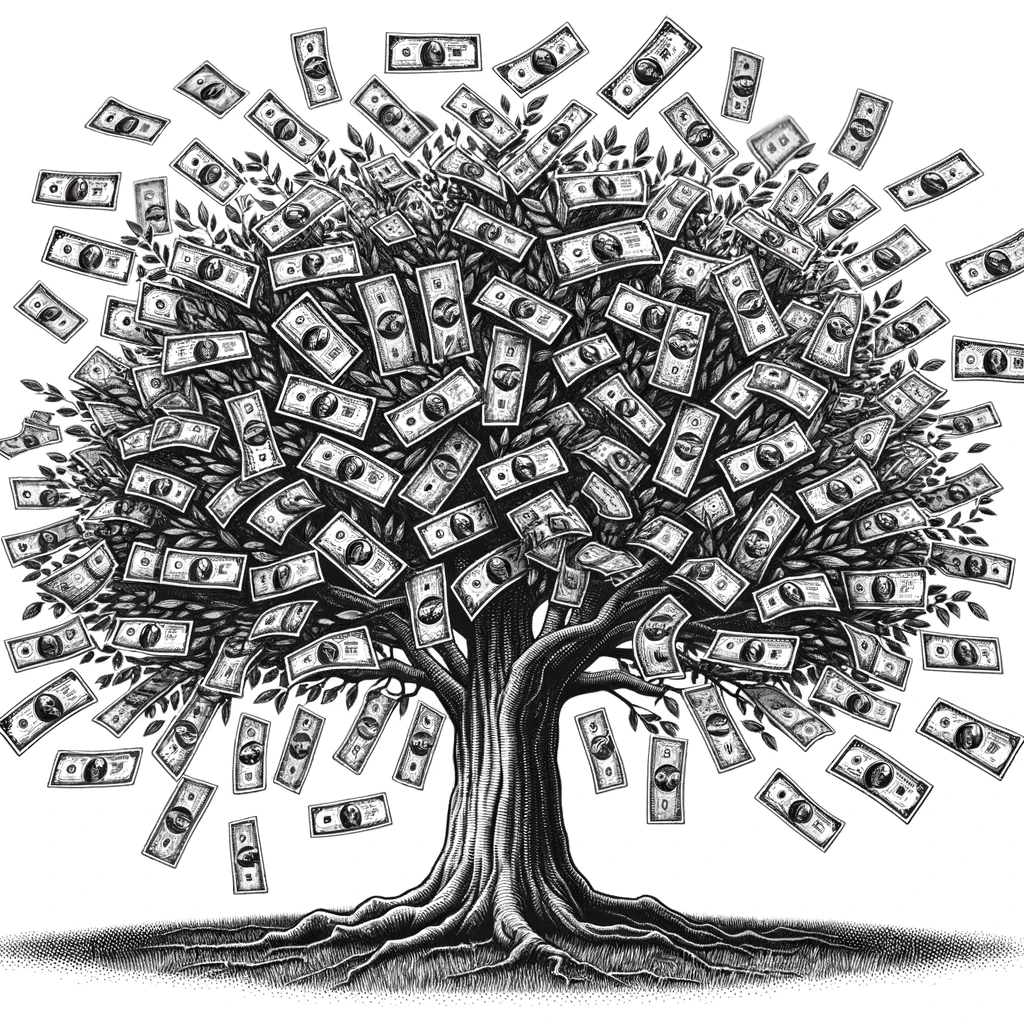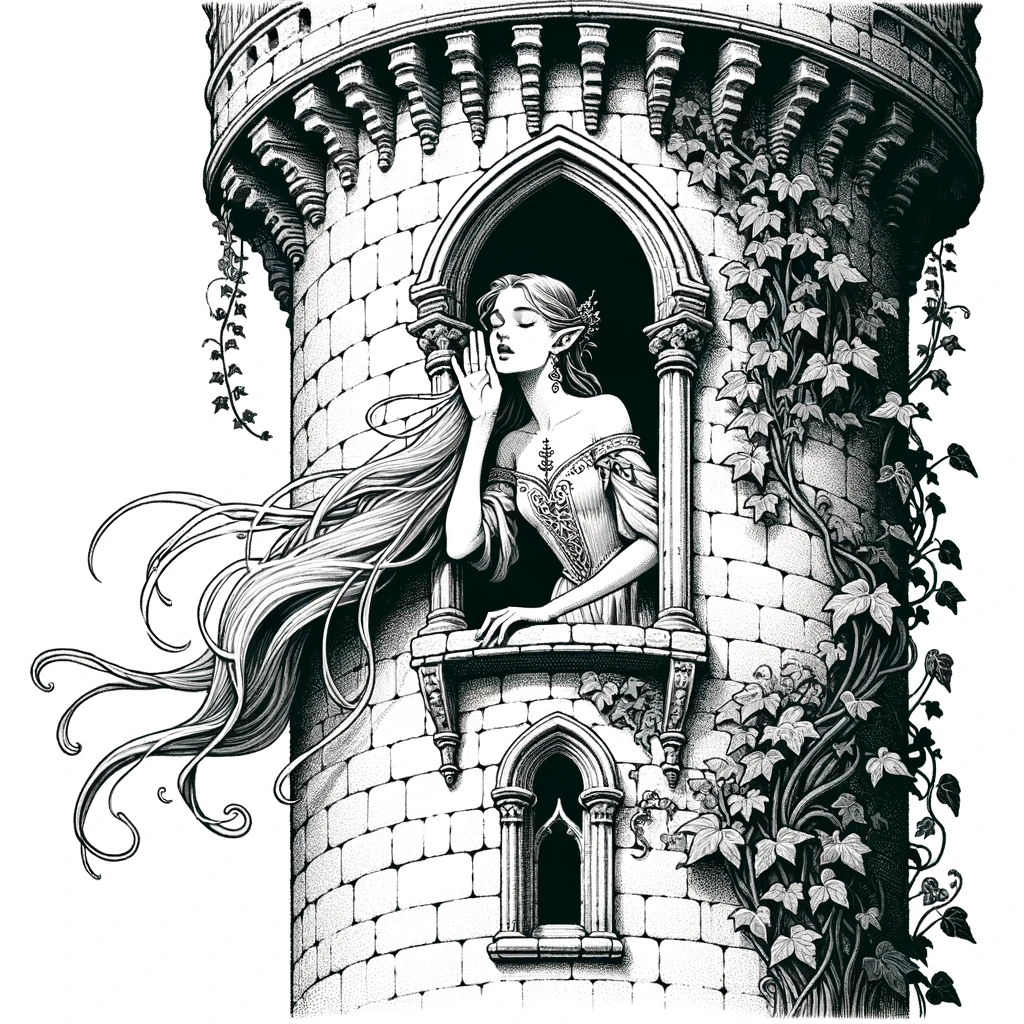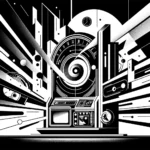In the world of language and literature, there’s a concept that is as elusive as it is familiar: the cliché. From novice writers to experienced orators, almost everyone has used or encountered a cliché at some point. But what exactly is a cliché? Let’s explore this concept in detail.
What is a Cliché?
At its core, a cliché is a phrase, idea, or element of artistic expression that has been overused to the point of losing its original meaning or effect. It’s something that has become trite, mundane, or predictable due to its frequent use in speech, writing, or representation.
Many words related to language and expression can sometimes be confused with the term “cliché,” especially by those who are not familiar with the nuances of each term.
- Idiom: An idiom is a group of words that have a figurative meaning, different from their literal definition. For example, “It’s raining cats and dogs,” means it’s raining very heavily.
- Stereotype: This refers to a widely held but oversimplified and generalized belief about a particular type of person or thing. While both clichés and stereotypes involve generalizations, stereotypes often relate to people and can have more harmful connotations. For example, saying “All blondes are dumb” is a stereotype.
- Platitude: A trite or obvious remark, often said with the intent of offering comfort or advice. It’s similar to a cliché in being overused and lacking original thought. An example is saying “Everything happens for a reason” after a misfortune.
- Trope: A commonly recurring literary and rhetorical devices, motifs, or clichés in creative works. For instance, the ‘rags to riches’ story is a popular trope in literature and film.
- Truism: A statement that is obviously true and doesn’t need to be said. For instance, “You get what you pay for.” Another example is “Time waits for no one.”
- Maxim: A broad statement of truth or rule of conduct. It is often confused with cliché because both are well-known phrases that convey wisdom or a message. An example is “Honesty is the best policy.”
- Adage: A traditional saying expressing a common experience or observation. Like a cliché, an adage is often repeated, though it might not be considered overused or stale. For example, “An apple a day keeps the doctor away.”
- Proverb: A short saying that expresses a universally accepted truth or piece of wisdom. For example, “A stitch in time saves nine.”
- Hackneyed: This is an adjective that describes something that is not original or novel because of overuse, very similar to cliché. An example of a hackneyed phrase is “at the end of the day.”
- Meme: In its broader cultural context, a meme is an idea, behavior, style, or practice that spreads within a culture. In modern internet terminology, it often refers to a piece of media that spreads rapidly online. Some memes can become clichéd if overused. A classic example is the “Grumpy Cat” meme.
- Colloquialism: A word or phrase that is used in everyday conversation rather than in formal speech or writing. For example, saying “gonna” instead of “going to.”
- Cliche: Something that is so predictable or familiar that it no longer holds significance. For example, the phrase “love at first sight” is a cliché in romantic stories.
Origins of the Word Cliché
The term “cliché” has French roots, originally denoting the sound that was made when a mold (known as a stereotype) was dropped into molten metal to produce type for printing. It is the past passive participle of clicher, ‘to click’. As this process produced identical items repeatedly, the term evolved to describe phrases or expressions that were used repetitively and thoughtlessly.
Why Do Clichés Proliferate?
Clichés often start as fresh, innovative ideas or expressions that aptly and succinctly capture a sentiment or concept. Because of their effectiveness, they get adopted widely. However, with time and repetition, they lose their novelty and impact.
- Ease of Understanding: They provide a shorthand way of expressing a particular idea that is instantly recognizable to a broad audience.
- Cultural Resonance: Some clichés persist because they resonate with widely shared cultural values or experiences.
- Lack of Effort: At times, they’re used as a crutch when the speaker or writer cannot come up with an original way to convey an idea.
Orwell and the Dead Metaphors
In his essay “Politics and the English Language,” George Orwell criticizes the decay of the English language with use of metaphors, similes, and idioms. Orwell argues that these often become clichés, or “dead metaphors,” which contribute to lazy and unclear thinking.
“A newly invented metaphor assists thought by evoking a visual image, while on the other hand a metaphor which is technically ‘dead’ (e.g. iron resolution) has in effect reverted to being an ordinary word and can generally be used without loss of vividness. But in between these two classes there is a huge dump of worn-out metaphors which have lost all evocative power and are merely used because they save people the trouble of inventing phrases for themselves. Examples are: Ring the changes on, take up the cudgel for, toe the line, ride roughshod over, stand shoulder to shoulder with, play into the hands of, no axe to grind, grist to the mill, fishing in troubled waters, on the order of the day, Achilles’ heel, swan song, hotbed. Many of these are used without knowledge of their meaning (what is a ‘rift’, for instance?), and incompatible metaphors are frequently mixed, a sure sign that the writer is not interested in what he is saying.”
George Orwell – Politics and the English Language
It is interesting that many of the metaphors that Orwell mentions are no longer used widely in 2023. Can these old phrases be resuscitated to inspire a new generation of readers. Will they, like bell bottoms, return again for another round?

Examples of Cliché Phrases:
Here are some examples of what might be considered cliché phrases found in the English language:
- “Absence makes the heart grow fonder.”
- “A friend in need is a friend indeed.”
- “Age is just a number.”
- “A leopard can’t change its spots.”
- “All’s well that ends well.”
- “An apple a day keeps the doctor away.”
- “Actions speak louder than words.”
- “A picture is worth a thousand words.”
- “A rolling stone gathers no moss.”
- “A stitch in time saves nine.”
- “A watched pot never boils.”
- “Beauty is in the eye of the beholder.”
- “Beauty is only skin deep.”
- “Better late than never.”
- “Better safe than sorry.”
- “Birds of a feather flock together.”
- “Blood is thicker than water.”
- “Barking up the wrong tree.”
- “Break a leg!”
- “Burning the midnight oil.”
- “Curiosity killed the cat.”
- “Diamonds are a girl’s best friend.”
- “Don’t bite the hand that feeds you.”
- “Don’t count your chickens before they hatch.”
- “Don’t cry over spilled milk.”
- “Don’t put all your eggs in one basket.”
- “Don’t throw the baby out with the bathwater.”
- “Don’t put the cart before the horse.”
- “Easy come, easy go.”
- “Every cloud has a silver lining.”
- “Every dog has its day.”
- “Every man for himself.”
- “Every rose has its thorn.”
- “Fools rush in where angels fear to tread.”
- “Fit as a fiddle.”
- “Good things come to those who wait.”
- “Great minds think alike.”
- “Haste makes waste.”
- “Hit the nail on the head.”
- “Honesty is the best policy.”
- “If it ain’t broke, don’t fix it.”
- “Ignorance is bliss.”
- “It’s a piece of cake.”
- “It takes two to tango.”
- “It’s raining cats and dogs.”
- “Keep your friends close and your enemies closer.”
- “Kill two birds with one stone.”
- “Laughter is the best medicine.”
- “Let the cat out of the bag.”
- “Like a kid in a candy store.”
- “Look before you leap.”
- “Love is blind.”
- “Make hay while the sun shines.”
- “Misery loves company.”
- “Money doesn’t grow on trees.”
- “Never look a gift horse in the mouth.”
- “No pain, no gain.”
- “Old habits die hard.”
- “Once in a blue moon.”
- “Opportunity knocks but once.”
- “Out of sight, out of mind.”
- “Out of the frying pan and into the fire.”
- “Practice makes perfect.”
- “Read between the lines.”
- “Rome wasn’t built in a day.”
- “Seeing is believing.”
- “Silence is golden.”
- “Strike while the iron is hot.”
- “The apple doesn’t fall far from the tree.”
- “The ball is in your court.”
- “The best of both worlds.”
- “The bigger they are, the harder they fall.”
- “The early bird catches the worm.”
- “The grass is always greener on the other side.”
- “The more, the merrier.”
- “The pen is mightier than the sword.”
- “The pot calling the kettle black.”
- “The road to hell is paved with good intentions.”
- “The show must go on.”
- “There’s no place like home.”
- “There’s no smoke without fire.”
- “Time flies when you’re having fun.”
- “Time heals all wounds.”
- “Throw in the towel.”
- “Too many cooks spoil the broth.”
- “Two wrongs don’t make a right.”
- “Variety is the spice of life.”
- “When in Rome, do as the Romans do.”
- “When one door closes, another one opens.”
- “When the going gets tough, the tough get going.”
- “Where there’s smoke, there’s fire.”
- “You can’t have your cake and eat it too.”
- “You can’t judge a book by its cover.”
- “You can’t make an omelette without breaking a few eggs.”
- “You can’t teach an old dog new tricks.”
- “You have to kiss a lot of frogs before you find your prince.”
- “You reap what you sow.”
- “You’re the apple of my eye.”
These phrases have been used so frequently in literature, conversation, and media that they have become embedded in our collective consciousness. They’re easily recognized and understood, but as with all clichés, they can also feel trite or lack originality when used too often.
The Visual Cliché

Visual clichés are recurring and often overused visual themes or motifs that, due to their frequent repetition, lose their original impact and novelty. Just as verbal clichés can elicit eye rolls because of their predictability, visual clichés can have the same effect on an audience familiar with the trope. From the heroic silhouette standing against a sunset to the slow-motion run in a romantic reunion, these images, while effective in conveying specific emotions or ideas, can sometimes feel trite or unimaginative because of their pervasive use in media and art.
Examples of Visual Clichés
- Apple Falling: Symbolizing the discovery or realization, often referencing Newton’s discovery of gravity.
- Light Bulb Turning On: Represents a new idea or sudden realization.
- Dripping Tap: Indicating time passing or someone being kept awake.
- Falling Leaves: Signifying autumn or the passage of time.
- Calendar Pages Blowing Away: Denoting the rapid passage of days or months.
- Mirror Reflection Doesn’t Match: Indicating a split personality, inner turmoil, or a supernatural occurrence.
- Walking Away from Explosions: A character casually walking away, not reacting to a massive explosion behind them.
- Wilhelm Scream: A specific scream sound effect reused in numerous films and TV shows.
- Enhance!: In crime dramas, when a blurry image is zoomed in and magically becomes high resolution.
- Morning Alarm Clock: Showing the exact moment a character wakes up, often with the alarm being hit or thrown.
- Character Looking in a Mirror: Often used as a moment of self-reflection or transformation.
- Desert Mirage: A character, often dehydrated in a desert, sees a mirage of water or an oasis.
- Busy City Crosswalk: A shot of people walking across a bustling city street, symbolizing urban life.
- Lovers Running Towards Each Other: Often in slow motion, usually set in a picturesque location.
- Crows Cawing and Flying Off: Indicating impending doom or to give a spooky atmosphere.
- Magnifying Glass: Often used in detective scenes to signify investigation.
- Silhouetted Standoff: Characters facing off, especially in Westerns, where only their silhouettes are visible against a setting sun.
- Curtains Blowing in the Wind: Signifying a presence or to set a mood, sometimes romantic or eerie.
- Quicksand: Characters slowly sinking, often used in older adventure films.
- Time Lapse of Blooming Flowers: Indicating new beginnings or the passage of time.
- Broken Glasses: Signifying vulnerability or the climax of a tense situation.
- Zooming in on a Newspaper Headline: Used to quickly convey important plot information.
- Diner Scene with Jukebox: Often a setting for casual conversations or confrontations in movies.
- Character Standing in the Rain: Denoting sadness, despair, or cleansing.
- Pulling a Sword from a Stone: Referencing the Arthurian legend but also symbolizing an unexpected hero or leader.
- Casting a Long Shadow: Indicating a powerful or looming presence.
- Footprints in the Sand: To show someone has been there or to evoke thoughts of solitude.
- Spinning Newspaper: Used to transition and present news that drives the plot forward.
- Closing Book: Signifying the end of a story or chapter.
- Toast Popping Up: Indicating breakfast or a startled reaction in a comedic setting.
The Narrative Cliche (Tropes)

Narrative clichés, often referred to as tropes, are recurring storytelling devices, themes, or character archetypes that have been used so frequently they’ve become predictable to audiences. These elements, originally effective and engaging, can lose their impact over time due to overuse. For example, the “damsel in distress” waiting for a hero or the “chosen one” destined to save the world are classic narrative clichés.
Narrative Trope Examples
- The Chosen One: A character destined to save the world or achieve a great task.
- Damsel in Distress: A female character in need of rescue, often by a male protagonist.
- Reluctant Hero: A protagonist who initially refuses or avoids their destined role.
- Mentor Archetype: An older, wiser character who guides the protagonist.
- Redemption Arc: A previously antagonistic or morally grey character seeks or achieves redemption.
- Love Triangle: A romantic entanglement involving three characters.
- Rags to Riches: A character rises from poverty to wealth or prominence.
- Tragic Hero: A protagonist with a fatal flaw that leads to their downfall.
- Villain’s Monologue: The antagonist reveals their plan or motives in a lengthy speech.
- False Protagonist: Introducing a character as the story’s protagonist, only for them to be quickly removed, either by death or another means.
- MacGuffin: An object or goal the protagonist pursues, often with little inherent narrative explanation.
- Fish Out of Water: A character is placed in an unfamiliar environment and must adapt.
- The Big Misunderstanding: Conflict arises from a miscommunication or lack of communication.
- Coming of Age: A character matures or gains understanding, often transitioning from childhood to adulthood.
- Evil Twin: A character has a twin or double with malicious intentions.
- Forbidden Love: Characters fall in love despite societal, familial, or cultural barriers.
- Amnesia: A character forgets crucial events or their own identity.
- The Quest: Characters embark on a journey to achieve a goal.
- The Prophecy: A foretelling of events to come that often influences characters’ actions.
- Last Stand: Characters make a final, often heroic effort against overwhelming odds.
- Face–Heel Turn: A good character becomes antagonistic.
- Heel–Face Turn: An antagonist becomes good.
- The Anti-Hero: A protagonist who lacks conventional heroic qualities.
- Instant Expert: A character quickly becomes proficient in a skill that should take years to master.
- Dead All Along: It’s revealed that a character was dead for the entirety, or a significant portion, of the narrative.
- Frame Story: A story within a story.
- Enemies to Lovers: Characters who start off antagonistic to one another eventually fall in love.
- Fate Worse than Death: Rather than dying, a character endures an existence or punishment seen as more terrible.
- Revenge Plot: A character seeks vengeance for a wrong done to them.
- The Double-Cross: An ally turns on the protagonist or vice versa.
- Time Loop: Characters relive a certain period repeatedly until certain conditions are met.
- Cinderella Story: A downtrodden character achieves success or happiness.
- Secret Legacy: The protagonist discovers they are the heir or successor to a significant legacy or power.
- Monster of the Week: In episodic media, a new antagonist appears in each episode.
- The Reveal: A twist that redefines the narrative or a character’s role.
- Bittersweet Ending: The ending is both happy and sad.
- The Unmasking: A character’s true identity or nature is revealed.
- Fake Death: A character is believed to be dead but later revealed to be alive.
- Twin Switch: Identical twins swap places.
- Training Montage: A sequence showing a character undergoing intense training, usually condensed to show progress over time.
Avoiding the Cliché Trap
For writers and creators, clichés can be double-edged swords. While they can be useful for quickly conveying ideas, they can also make the work seem lazy, uninspired, or unoriginal. Here are a few tips to avoid them:
- Awareness: Familiarize yourself with common clichés in your genre or field.
- Originality: Strive for fresh metaphors, analogies, and expressions.
- Audience Feedback: Beta readers, editors, or peers can help identify clichés you might have missed.
CS Lewis on Originality & Truth
C. S. Lewis suggests that striving for truth in one’s writing is a way to avoid the trappings of clichés and derivative expressions.
Even in social life, you will never make a good impression on other people until you stop thinking about what sort of impression you are making. Even in literature and art, no man who bothers about originality will ever be original: whereas if you simply try to tell the truth (without caring twopence how often it has been told before) you will, nine times out of ten, become original without ever having noticed it.
– C.S. Lewis, Mere Christianity
Interestingly, Lewis used could be accused of cliché (caring twopence) within this quote.
The Power of Subversion
A cliché can be turned on its head to create a fresh perspective. This is known as subverting a cliché. By taking a familiar concept and presenting it in an unexpected way, creators can surprise and engage their audience. Here are a few examples of subverting a cliché:
- “Don Quixote” by Miguel de Cervantes: The novel plays with and subverts the clichés of chivalric romances. Don Quixote, having read too many romance novels, believes himself to be a knight and sets out on a quest, only to comically misinterpret almost every situation he encounters.
- “To Kill a Mockingbird” by Harper Lee: Atticus Finch subverts the cliché of the fiery, passionate lawyer who gives rousing speeches in the courtroom. Instead, he’s calm, methodical, and quietly persuasive, challenging the stereotype of how a defense lawyer should act, especially in a racially charged trial.
- Banksy, a street artist, often subverts clichés. One example is his version of the iconic “Flower Thrower” image. Instead of a protester throwing a molotov cocktail, the figure is throwing a bunch of flowers, changing the message from one of violence to one of peace.
- Shrek: In “Shrek,” fairy tale clichés are turned on their head. Instead of a handsome prince rescuing the princess, an ogre does. The princess herself isn’t just a damsel in distress; she’s quite capable and has a secret of her own.
Why is Recognizing Clichés Important?
Clichés are deeply embedded in language and culture. While they have the risk of making content seem stale or repetitive, a deep understanding of them can empower a writer or artist to craft work that is both relatable and fresh. Throughout our exploration, we delved into various types of clichés: from written or verbal clichés, which are often phrases that have lost their original spark due to overuse, to visual clichés that are predictable visual representations, and narrative tropes which are frequently used storytelling techniques. By highlighting ways to subvert these clichés, we underscored the immense potential for originality even within familiar frameworks.
The key to unlocking this potential lies in being able to define and identify clichés. This skill not only helps writers and artists recognize and sidestep potential pitfalls but also equips them to craft content that stands out and resonates deeply.
The Word.Studio Cliché Finder
For those keen on refining their craft and ensuring their work remains fresh and engaging, we introduce the Word.Studio AI-powered cliché finder tool. By pasting any piece of writing or text into this tool, it meticulously identifies any clichés present, offering invaluable insights. With its helpful suggestions, you’re not left in the lurch but are equipped to replace worn-out words and concepts with innovative ideas. It makes finding clichés as easy as “shooting fish in a barrel”.












